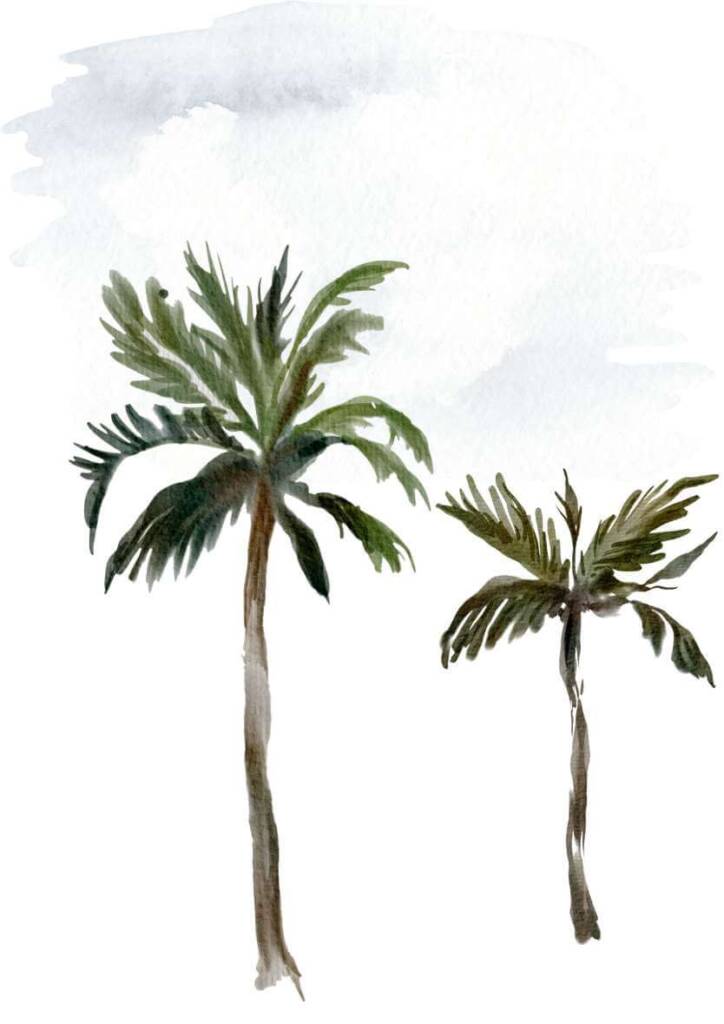Replace your royal or imperial palms with native palmito-jussara!
Palmito-jussara (Euterpe edulis) is a key element for the survival of more than 50 bird and mammal species in the Atlantic Forest along the Brazilian coast range. The main thretas to its conservation are:
- Illegal havesting: ‘jussara’ heart-of-palm has been stolen from the forest for decades without replanting or sowing.
- Deforestation: plants occurring in small forest fragments may become genetically debilitated for lack of gene exchange.
- Reduction of large bird species populations: large birds are jussara’s main seed dispersers, as they can carry them to long distances from the mother tree. Seeds gradually become smaller and lose vigour in areas where large birds are no longer present, as they are only consumed by smaller birds, with restricted dispersal capacity.
What are jussara fruits used for?
Jussara palms take about 8 years to reach maturity and produce fruit. These are used for pulp in the same way as its Amazon cousin assaí or açaí. The pulp is also used for juice, especially combined with other fruits. But at least half of the fruits should be left on the palms for native animals such as toucans, and forest conservation!
Planting non-native invasive palms impacts natural jussara populations
Imperial palms (Roystonea oleracea), native to the Lesser Antilles in the Caribbean, Colombia, and Venezuela, and Australian royal palm (Archontophoenix cunninghamiana) have been widely planted as ornamentals in coastal areas in Paraná state. Apart from using the same habitat as jussara palms, these non-native palms produce fruits that are dispersed by many of the same jussara dispersers, whose ecological role is to disperse jussara fruits. Many non-native seeds germinate and establish invasive populations in forest areas, directly competing with jussara palms for space, seed dispersers, and other resources.
These non-native palms are invasive in forest ecosystems: populations grow by excluding native plants from their natural habitat and making intensive use of available resources. Non-native species lack natural predators, which facilitates their establishment and competition with native species. The cultivation of invasive palms directly impacts jussara palms and the sustainability of many native species in the Atlantic Forest. As a result, biodiversity loss leads to cascading effects such as disruption of ecological processes over time.

What you can do to help:
Plant jussara palms in their native range: contribute to the sustenance of native animals in the Atlantic Forest and to maintain forest health.
Replace royal and imperial palm trees in your property with jussara palms: contribute to restoring and conserving the natural landscape in this beautiful region.
Do not cultivate invasive plants: check before you buy or before you plant. Visit the National Invasive Species Database managed by the Horus Institute in Brazil.
Saving trees from extinction
Where can you find jussara seedlings?
The state-owned nursery (Instituto Água e Terra) in Morretes has been producing large quantities of jussara seedlings for regional use. Seedlings are donated up to a certain quantity per person. The nursery is located on Estrada de Santa Fé, 600, not far from the center of Morretes.
Where to plant?
- Plant jussara inside forests or in shaded areas, on damp soils covered in litter and organic matter.
- Jussara palms are relatively small and thin, so they can be planted for ornamental purposes close to houses and other structures. They may reach 8m in height or slightly more.
- Jussara can even be planted in vases, especially during its initial years of development, for ornamental use in patios and gardens.
- If you have fruits or seeds in large quantities, sow them inside forest areas that have been depleted in the past, on damp soils with litter accumulation.



